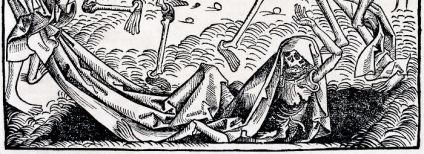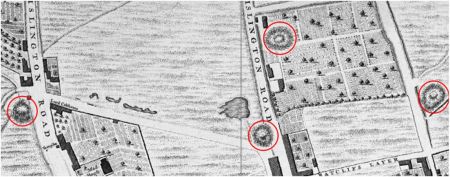Glasgow City Council have warned people not to breach to cordon around the recently fire-ravaged Glasgow School of Art. Their concern is that those approaching or entering the site of the fire may be injured either on the site or if the buildings were to collapse. There is often a temptation amongst local residents and the curious to assume that as soon as a building fire is put out all can return to normal, but the experiences of a group of curious Londoner’s who explored the site of a significant London fire in 1730 suggests this might not be such a good idea.
On the morning of Tuesday 31 March 1730 a major conflagration broke out at the property of Mr Clinton, a distiller, near the junction of Fetter Lane and Fleet Street. The head of his still broke-away spraying flammable spirits throughout the building. Within the space of just ninety minutes not only was Mr Clinton’s house alight but so were those of his neighbours: Mr Kingham’s, a potter, Mr Allin’s, a shoemaker, and Mr Sawkins proprietor of the Magpye and Horseshoe. Residents, neighbours and firefighters rushed to fight the blaze and remove property from the endangered buildings. Suddenly two of the buildings collapsed: nine were immediately rescued from the debris, three of whom were killed instantly while the other six were ‘miserably bruised’. In addition a number of firefighters from more than one insurance company brigade were found to be missing and ‘tis feared, have perished in the ruins.’ (The Daily Journal, 1 April 1730) One of these was later named as ‘James Mitchell, a Fire-man’ (The Daily Courant, 3 April 1730). It took the best part of the day to extinguish the flames but the rescue/recovery effort continued until Friday by which time the death-toll had grown to sixteen.
It is likely that seeing the visible flames put out and observing firefighters and others carefully working through the debris as they retrieved bodies tempted some to take a chance to look over the site of the fire. The fate of those who breached what was probably at best an informal cordon was relayed by the Daily Courant on Sunday 5 April. ‘Saturday morning 2 men stood upon the ruins of the late fire at the end of Fetter Lane, which sinking down with them, they were scorched in a deplorable manner, in so much that their skin came off; one of them, whose name was Joseph Millington, was to have been married yesterday, but died on Saturday in St Bartholomew’s hospital.’
The fate of Millington/Billing[ton] and his companion was taken up by The Daily Journal on Monday, 6 April: ‘Last Saturday Morning about 8, Jonathan Billing, a Journeyman Printer, and John Wilkinson, Servant to Mr. Thompson, a Glazier in Shoe Lane, standing upon one of the Vaults of the late Fire in Fleet-Street, the Rubbish gave Way, and they sunk into the same. They were taken out alive with all possible Haste, by Means of Ropes thrown in to their Assistance, and carried to St. Bartholomew’s Hospital. The latter was burnt all over his Body and Face, in such a miserable Manner, that he died in a few Hours after he was dressed. The former, whose Hands and Body, from his Navel downwards, were all stripped bare, in a most deplorable Manner, remained in the greatest Agonies till Yesterday Morning, when he expired.’
But even that episode was not enough to keep people away from the ruins as the report goes on to note that: ‘The same Day a Youth fell into the same Place, but was taken out without any great Damage.’ The editor of The Daily Journal felt this dangerous activity needed to be challenged and concluded the piece by stating that: ‘It is to be hoped these sad Examples may be a Means to prevent that fruitless and idle Curiosity, which Ieads unwary and rash People into such Hazards, as may be attended with Consequences so Fatal, when, if they escape Danger, they cannot really do any good.’
So Glaswegians, if you want to avoid the fate of John and Jonathan it’s probably best to stay outside the cordon!


